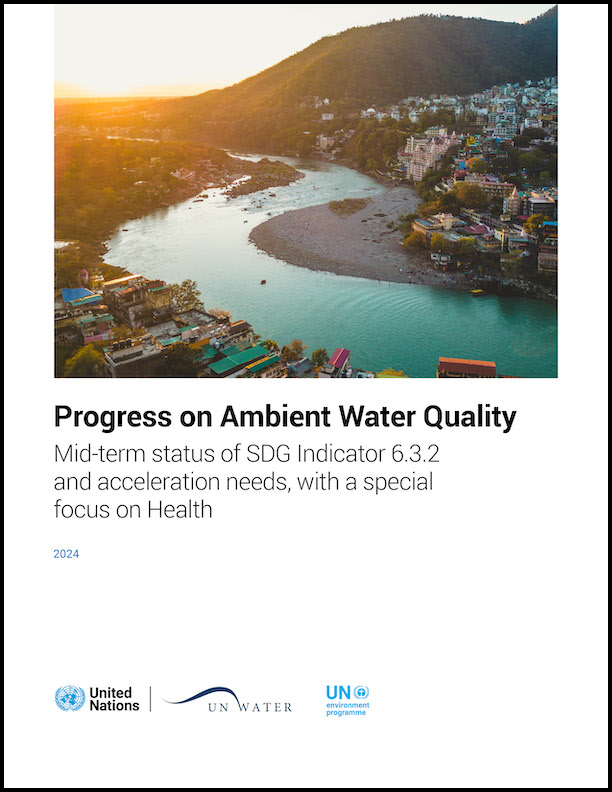Progress on Ambient Water Quality – 2024 Update


Target 6.3 is: “By 2030, improve water quality by reducing pollution, eliminating dumping and minimizing release of hazardous chemicals and materials, halving the proportion of untreated wastewater and substantially increasing recycling and safe reuse globally.”
Indicator 6.3.2 monitors the proportion of bodies of water with good ambient water quality, as per national and/or subnational water quality standards and based on measurements of five water quality parameters that inform on the most common pressures on water quality at the global level.
This report presents the global status on ambient water quality and acceleration needs to achieve target 6.3 by 2030, based on the latest data on indicator 6.3.2.
In the 2023 Data Drive, significant progress has been made in monitoring ambient water quality with 120 countries reporting on the indicator compared to 89 countries in 2022. This increased engagement is a positive sign, but the new information further highlights the pressing need for many low- and middle-income countries to strengthen their monitoring capacity so that progress towards Target 6.3 can be made clear. By 2030, the health and livelihoods of 4.8 billion people could be at risk if the water quality and monitoring of water bodies is not improved. Looking at the global picture, the proportion of water bodies classified as “good” dropped from 57 per cent in 2017 to 56 per cent in 2023.
Explore the latest data on indicator 6.3.2, by country, region and for the whole world.
Full Report
Progress Report on Ambient Water Quality, English
Visual Summary
Visual Summary: Progress on Ambient Water Quality, Arabic
Visual Summary: Progress on Ambient Water Quality, Chinese
Visual Summary: Progress on Ambient Water Quality, English
Visual Summary: Progress on Ambient Water Quality, French
Visual Summary: Progress on Ambient Water Quality, Russian
Visual Summary: Progress on Ambient Water Quality, Spanish
Infographic
Infographic explaining the relation between Agriculture, wastewater and water quality, English
Video
Video: Progress on Ambient Water Quality, English
UN-Water Publications
UN-Water’s publications can be divided into two main groups: the publications that represent all Members and Partners of UN-Water – the collective products – and the publications that are under the UN-Water umbrella but produced by groups or individual UN-Water Members and/or Partners – the related products.
